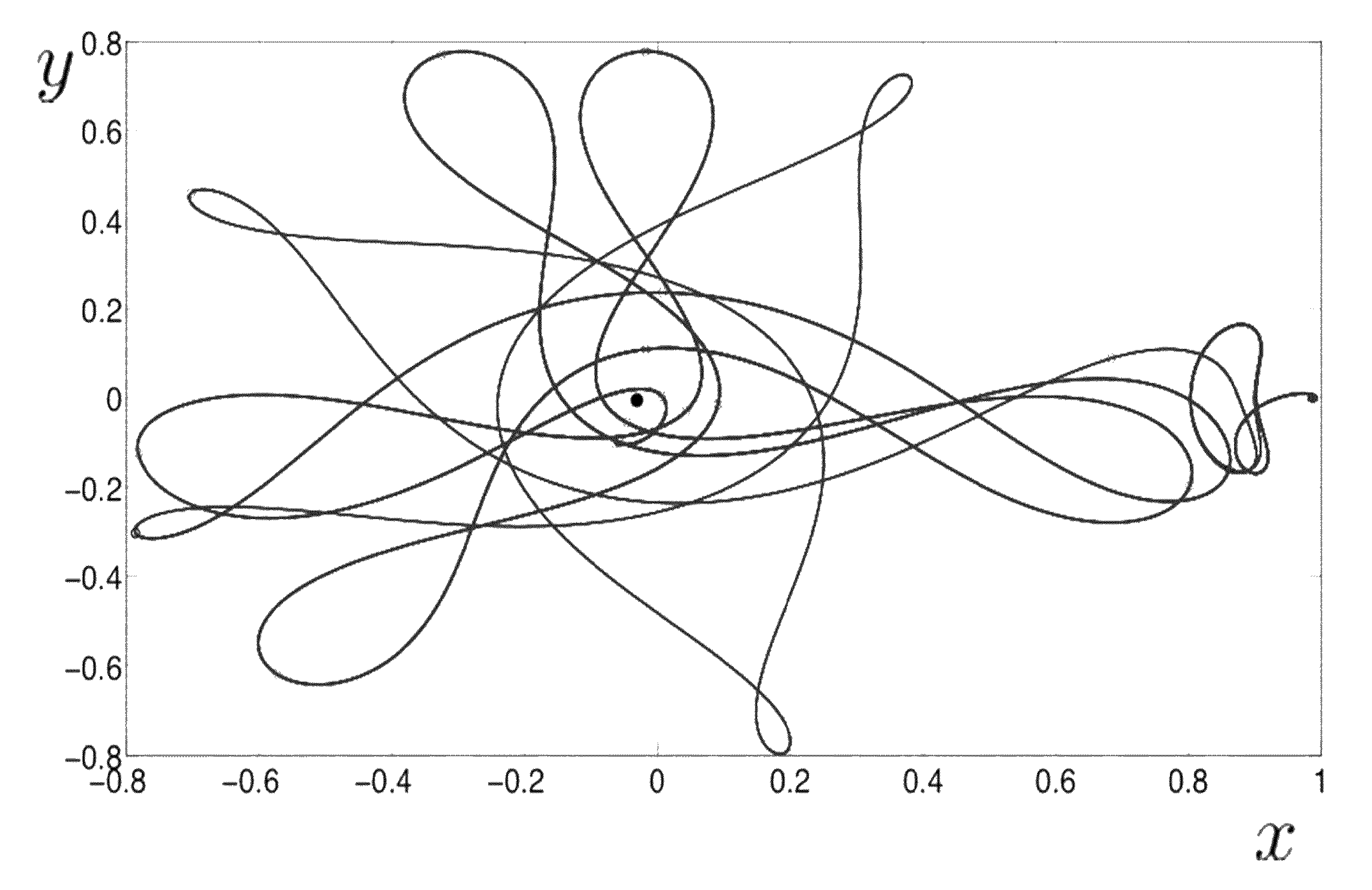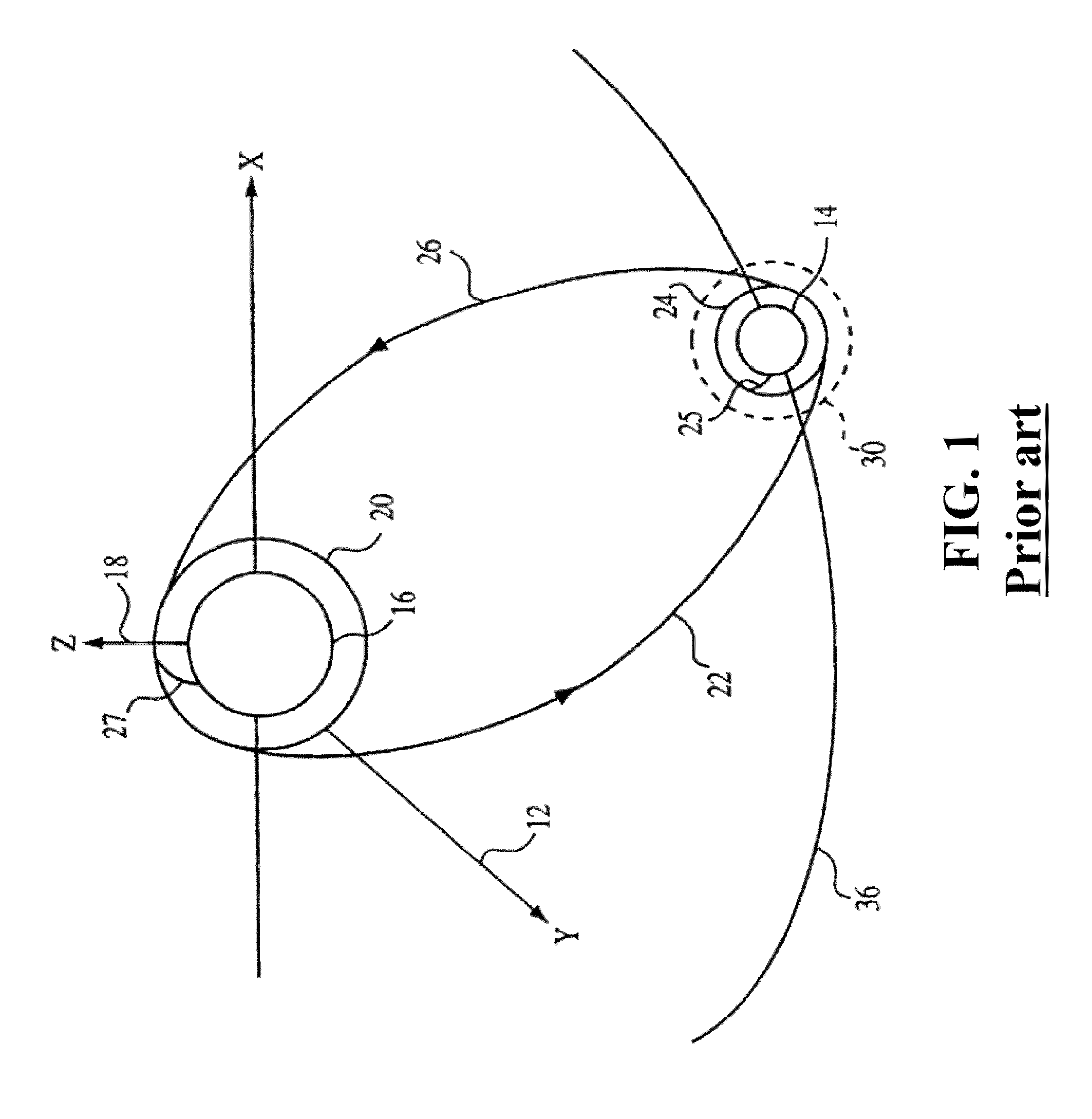System and method for controlling motion of spacecrafts
a technology for spacecraft and motion control, applied in the direction of navigation instruments, instruments for comonautical navigation, instruments, etc., can solve the problems of affecting the use of spacecraft, so as to achieve efficient determination of trajectory and optimize fuel consumption
- Summary
- Abstract
- Description
- Claims
- Application Information
AI Technical Summary
Benefits of technology
Problems solved by technology
Method used
Image
Examples
Embodiment Construction
[0045]Various embodiments of an invention determine a trajectory for a motion of an object from a Geostationary Transfer Orbit (GTO) of the earth to an orbit around the moon, within a specified time. Some embodiments use planar circular restricted three-body problem (PCR3BP) model, involving the motion of the earth, the moon and the object for an initial trajectory. The PCR3BP model is a mathematical model used to determine the motion of the object (such as a space probe) in an earth-moon system. The system is four-dimensional system, and a state of the system is uniquely determined by four variables, usually the X and Y coordinates, and the X and Y velocities.
[0046]In various embodiments the effect of sun in the initial trajectory is neglected. However, some embodiments, after determining the initial trajectory, refines the trajectory using a more accurate model, which includes the effects of sun and other relevant planets.
[0047]FIG. 2 shows a schematic of the GTO orbit 210 used by...
PUM
 Login to View More
Login to View More Abstract
Description
Claims
Application Information
 Login to View More
Login to View More - R&D
- Intellectual Property
- Life Sciences
- Materials
- Tech Scout
- Unparalleled Data Quality
- Higher Quality Content
- 60% Fewer Hallucinations
Browse by: Latest US Patents, China's latest patents, Technical Efficacy Thesaurus, Application Domain, Technology Topic, Popular Technical Reports.
© 2025 PatSnap. All rights reserved.Legal|Privacy policy|Modern Slavery Act Transparency Statement|Sitemap|About US| Contact US: help@patsnap.com



